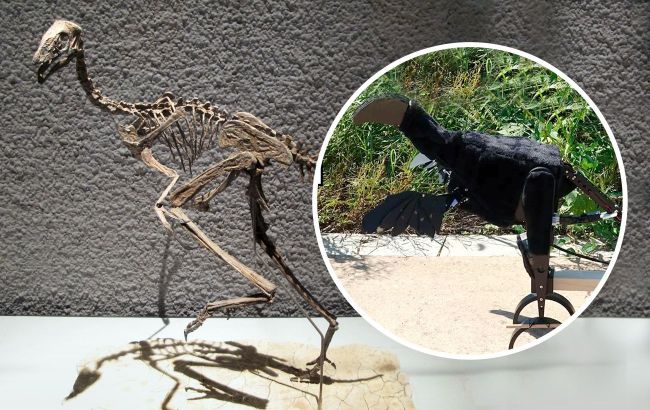Dinosaur's revival experiment: Scientists resurrect ancient creature to test evolution theory
 Why scientists revived a dinosaur (Collage: RBC-Ukraine)
Why scientists revived a dinosaur (Collage: RBC-Ukraine)
Scientists believe that small feathered dinosaurs used their wings to lure prey out of hiding. To test their theory, a team revived a prehistoric creature in the form of a dinosaur robot, reports IFLScience.
The modern dinosaur would have many small non-avian dinosaurs covered in feathers. A particular type of feathers found only in Pennaraptora was present on their protofeathers, which were too small for flight, and on their tails. These feathers often had contrasting patterns.
Although the function of these wings is unknown, the team suggests that displaying their plumage might have been used to lure prey out of hiding, making hunting easier.
"The dinosaurs would have been insectivores and omnivores, driving creatures like insects out to eat. This behavior can still be seen in living bird species, such as the greater roadrunner (Geococcyx californianus) and the northern mockingbird (Mimus polyglottos). Plumage displays trigger the prey item out of hiding, allowing the animal to then pursue it and attempt to capture and consume it," say the scientists.
To test this theory, the team created a Robopteryx, a dinosaur-shaped robot with protofeathers. The robot was based on the dinosaur Caudipteryx, which lived approximately 124 million years ago and was believed to be about the size of a peacock.
The team then observed the behavior of grasshoppers in response to the robot's wing displays, using this specific group of insects as they belong to the order Orthoptera, which also existed 124 million years ago.
The Robopteryx was used in several sequences simulating different pursuit displays. These displays included moments when the protofeathers were spread wide, the tail raised, and then the wings folded back with the tail lowered.
Did the experiment prove the theory?
The results showed that 93% of the tested grasshoppers fled when the robot used protofeathers, compared to only 47% when the robot did not use its wings. There was also a significant correlation between the white spots on the wings and the feathers on the tail and the likelihood of grasshoppers fleeing.
Overall, the team believes that this may explain how the feathers on protofeathers and tails were used and why they may have evolved in dinosaurs.
Also, check out the discovery of a new tyrannosaur by scientists.
Previously, we reported on scientists revealing a perfectly preserved dinosaur embryo found in a fossilized egg.

